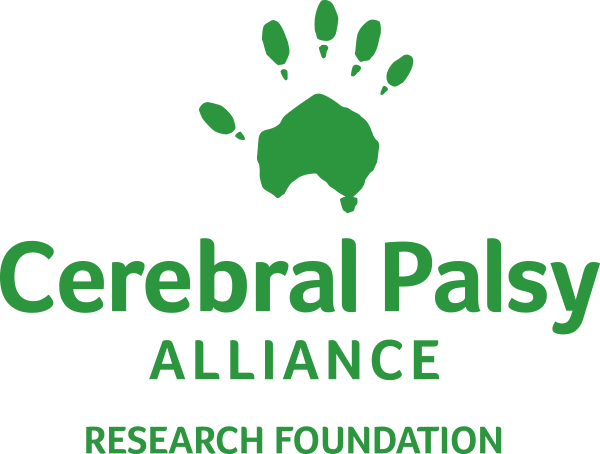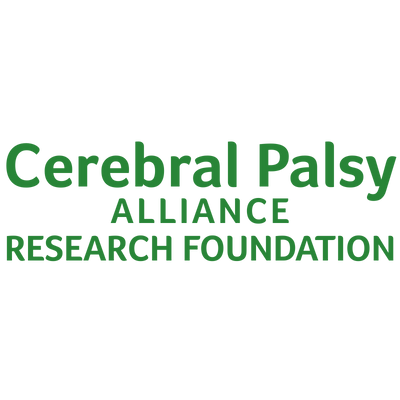These grants are awarded based on scientific merit, as determined by expert reviewers from around the world. CPARF grant funding typically begins in the calendar year following the grant round — for example, a grant awarded in 2017 would begin funding in 2018.
Thanks to your support, we can continue funding the most promising US-based researchers working to redefine what’s possible for people with cerebral palsy.
Zachary Vesoulis
Washington University in St. Louis, Missouri
Investigating the determinants of white matter injury in prematurity
Injury to the white matter of the brain affects 10-15% of all preterm infants and is associated with a ten-fold increased risk of cerebral palsy. In response to the frequent (and often severe) fluctuations in oxygen levels common to the course of preterm infants, the brain compensates by increasing extraction of oxygen, however this compensation may be overwhelmed, exposing the brain to injury. Although white matter is vulnerable to injury when there is too little oxygen, the current standard of clinical care does not involve routine monitoring of oxygen levels in the brain circulation, making it difficult to adjust oxygen treatment with the aim of reducing brain injury. We propose a new method for monitoring brain oxygen levels, combining two widely used oxygen-monitoring devices (near-infrared spectroscopy and pulse oximetry) in a novel way. Once applied, this will provide personalized guidance for oxygen management and reduce CP-related brain injury.
Srinivas Manideep Chavali
University of California, San Francisco, California
Oligodendrocyte-encoded HIF signaling network as a therapeutic target for Cerebral Palsy
Neonates affected by hypoxic ischemic encephalopathy (HIE) and periventricular leukomalacia (PVL) are at extremely high risk for developing cerebral palsy (CP). This research focuses on oligodendrocytes, a special brain cell that is responsible for generation of myelin, a primary component of white matter that insulates axons to ensure proper nerve signal transmission and brain development. This process is called myelination. Research from our lab has previously shown that activation of hypoxia inducible factor (HIF) gene signalling results in delayed/disrupted myelination. This work will precisely elucidate the gene regulatory role of HIF in oligodendrocytes and how this affects the myelination in the context of hypoxic brain injuries. We will also examine LGK-974, a pharmacological agent that is systemically tolerated and inhibits production of oligodendrocyte Wnt7, a known HIF target and myelination blocking molecule and investigate its potential to initiate remyelination process after hypoxic injury. The hypothesis to be tested is that HIF signalling targets in oligodendroglial cells are detrimental for myelination during chronic hypoxemia conditions such as HIE/PVL and that blocking Wnt7, a major HIF target in oligodendrocytes will be an effective therapeutic strategy for treating CP.
Sandra Juul
University of Washington, Washington
Epigenetic biomarkers of cerebral palsy in the ELGAN
Extremely Low Gestational Age Neonates (ELGANs) experience high rates of neurodevelopmental impairment, including cerebral palsy in up to 10%. The emerging field of epigenetics is a promising avenue for discovery of biomarkers that can 1) elucidate causal pathways, 2) identify infants early in the course of disease progression, and 3) provide potential novel therapeutic targets. State of the art approaches will be employed to assess genome-wide DNA methylation and associated changes in gene expression in the ELGAN. In an ancillary study to an NIH-funded Phase III randomized controlled trial assessing erythropoietin (Epo) for neuroprotection in preterm infants (PENUT trial, NCT01378273), epigenetic differences will be evaluated between cerebral palsy cases and matched controls. We will also assess whether Epo treatment modulates candidate epigenetic biomarkers of disease. If successful, this study will identify early neonatal biomarkers that can provide improved means for screening, diagnosis and treatment of cerebral palsy in the ELGAN. The investigators have a unique opportunity to evaluate biological samples collected as a part of an NIH-funded Phase III Randomized Controlled Trial assessing the efficacy of erythropoietin (Epo) for neuroprotection in preterm infants (Preterm Epo Neuroprotection Trial (PENUT Trial)). We will evaluate neonatal peripheral blood cell (PBC) samples from selected PENUT subjects at baseline (day 1) and 14 days to evaluate whether the stressors of extrauterine life result in differentially methylated regions (DMRs) of genomic DNA that can distinguish infants with and without cerebral palsy (CP). We will concurrently evaluate the whole gene transcriptome to determine whether DMR-regulated genes are differentially expressed in infants with and without CP. We hypothesize that ELGANs with CP will have distinct DMR profiles associated with expression of genes that either regulate response to inflammation, hypoxia, and oxidative stress and/or are involved in glial differentiation and myelination.
Michael Kruer
University of Arizona, Arizona
Predicting response to deep brain stimulation through genomic classification of dystonic cerebral palsy
Dystonic CP may respond dramatically, or not at all, to deep brain stimulation (DBS), a type of neuromodulation. At the present time, it is extremely difficult to predict how an individual with dystonic CP will respond to DBS, making it challenging for physicians to counsel patients and problematic for families to decide whether their child should have electrodes placed in the brain. To address this limitation, we propose a novel approach that combines genomic findings with detailed clinical data found within the PediDBS Database to predict which individuals are good candidates for DBS.
Cerebral palsy (CP) represents a class of neurodevelopmental disorders affecting movement, while dystonia is a specific movement disorder characterized by abnormal patterns of motor activation. Just under 10% of the CP population is thought to have dystonic CP, and this may be an underestimate. Deep brain stimulation (DBS) utilizes direct current stimulation of specific brain nuclei to modulate neural network activity. DBS was originally developed for Parkinson Disease but more recently has been applied to childhood dystonia. DBS can be used to effectively treat dystonic CP. DBS can be remarkably effective in some cases, literally allowing some children to get up from their wheelchairs and walk again. However, in other cases, minimal improvement is evident. A current major challenge in the field is thus predicting which patients may benefit from DBS. Prior findings have suggested that the etiology of a patient’s dystonia is highly predictive of response.
Alexander Hoon
Johns Hopkins University School of Medicine, Maryland
Quantifying Chronic Pain in Individuals with Cerebral Palsy: The First Step to Better Treatment
While chronic pain is a well-recognized problem for individuals with cerebral palsy (CP), we know little about who is at risk, and how to prevent/treat it. The previously-held concept that the brain experiences tissue perturbation as pain has been replaced by a biopsychosocial model where pain is perceived as the summation of peripheral nociceptive stimuli, central processing and psychological and environmental factors.1 We hypothesize that chronic pain may result from abnormally-wired pain circuits disrupted by the same early insult that led to CP, with cumulative medical problems and/or inherent genetic vulnerability also playing an important role. This observational study will compare how chronic pain correlates with temperature and touch sensation, the cause of their CP, and specific imaging and biomarkers.2 Our long term goal is to identify people with CP at risk for chronic pain, to discover effective interventions, and to potentially prevent chronic pain from occurring through early intervention. People with CP commonly experience chronic pain 3-6, which often becomes more frequent and severe with age 7-11. We hypothesize that the development of chronic pain for each individual with CP arises from the combined contributions of genetic predisposition, perinatal risk factors, childhood morbidities and epigenetic modifications, leading to disruption of pain processing. We propose the cumulative impact of these factors can be characterized using a precision medicine approach into a pain risk score (PRS) – using QST, underlying etiology, fluid biomarkers and brain connectivity. This proposal will characterize the PRS using the following aims.
Joanne Kurtzberg
Duke University
Mesenchymal Stem Cells (Derived from Extracellular Vesicles) for Repair after Neonatal StrokeA Phase II, Multi-Site Study of Autologous Cord Blood Stem Cells for Hypoxic Ischemic Encephalopathy
Cerebral palsy results from in utero or perinatal injury to the developing brain, often through stroke, hypoxic insult or hemorrhage. Currently available treatments for patients with cerebral palsy are supportive, but not curative. Umbilical cord blood (UCB) has been shown to lessen the clinical and radiographic impact of hypoxic brain injury and stroke in animal models. UCB also engrafts and differentiates in brain, facilitating neural cell repair, in animal models and human patients with inborn errors of metabolism undergoing allogeneic, unrelated donor UCB transplantation. We hypothesize that, in the setting of brain injury, infusion of autologous UCB will facilitate neural cell repair resulting in improved function in pediatric patients with cerebral palsy.

